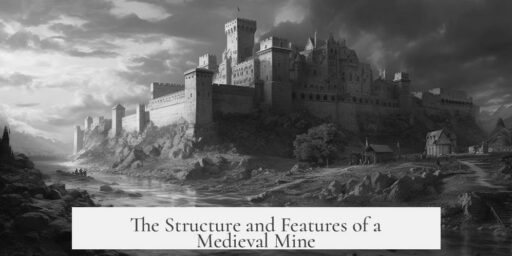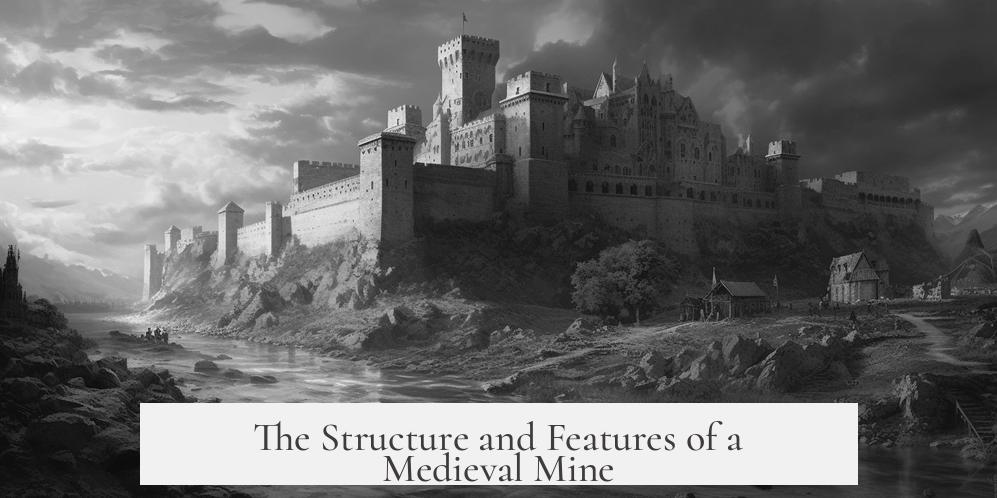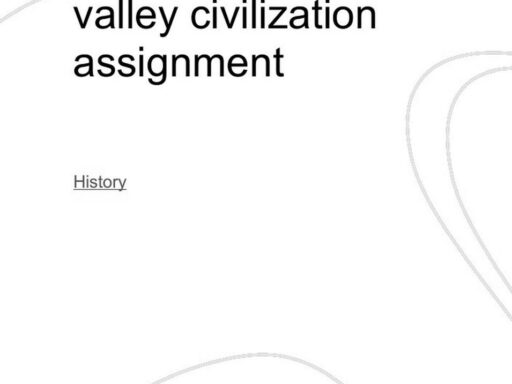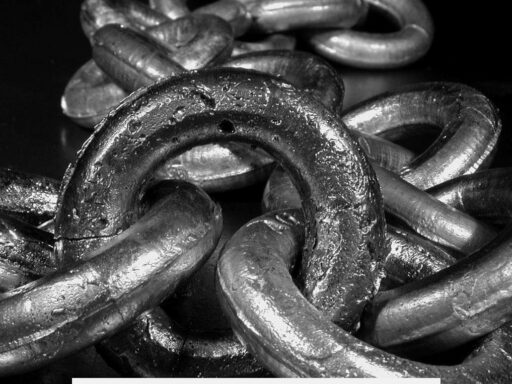A medieval mine primarily featured vertical shafts reinforced with wooden supports, open pits, or winding tunnels following ore veins. Miners dug down carefully along mineral streaks. Larger mines included pumps and bellows for water drainage and ventilation. Mining involved breaking rock by fire-setting—heating stone then cooling it rapidly to crack it. Miners transported ore in handcarts, lifted by treadmills or watermills to the surface. There, water-powered hammers crushed and washed ore to reduce impurities before smelting.
The visible structure of medieval mines often included steep shafts and pits, supported by timber frameworks to prevent collapse. Miners followed veins of iron, lead, silver, or coal, creating mazelike tunnels that sometimes extended deep underground. This method often led to irregular, meandering layouts that mirrored the natural ore formations.
Ventilation posed challenges as mines grew deeper. Larger shafts utilized bellows powered by waterwheels to pump fresh air down to workers. Simultaneously, drainage pumps removed infiltrating water to prevent flooding, which previously limited mining depths. The introduction of water-powered machinery marks a turning point in medieval mining, especially from the 10th century onward.
Medieval miners employed fire-setting to fracture rock. This involved lighting fires against rock faces, then dousing heated areas with water to force cracks. This technique softened rock, enabling easier removal with iron pickaxes. The broken ore was loaded into small carts and hauled to shafts. Using treadmills or waterwheels, workers elevated the loads to the surface for processing.
Above ground, ore underwent initial treatment. Water-powered giant hammers crushed the ore into smaller fragments. Then washing removed rock and earth, decreasing the volume of slag in smelting. Smelting itself gradually became separate from mining sites, allowing specialized metalworking far from extraction points.
Mining productivity advanced notably after the 10th century with mechanization and water-powered tools. Treadmills and pumps allowed deeper shafts safely drained and ventilated. Despite this, challenges persisted.
- Flooding remained a chief difficulty before reliable water removal technologies. It restricted mining to shallow depths.
- Separating metal ore from surrounding waste rock required intensive washing and crushing.
- Transporting ore from underground shafts to the surface often increased costs and delayed processing.
German miners pioneered many improvements in mining techniques and ore treatment. They expanded metal production in Central Europe and the Eastern Alps. Their expertise spread to France and Flanders, influencing medieval metallurgy widely.
Miners commonly lived in settlements near work sites. These communities were semi-autonomous, possessing unique customs and privileges. Regional rulers supported these groups to boost revenue from mineral exploitation. Settlers received land for homes, mills, forges, and farming, along with resource rights such as water streams and timber.
Mining output fluctuated significantly during the 14th and early 15th centuries. Factors such as the Great Famine (1315–1317), the Black Death (1347–1353), and the Hundred Years War disrupted labor availability and economic stability. These crises slowed underground mining and metallurgical trade severely.
Following recovery, capital investments surged in mining technology, allowing deeper excavations. Innovations in water and animal power further improved drainage and ore lifting. This period marked a transition to larger, more sophisticated mining operations.
| Aspect | Description |
|---|---|
| Mine Design | Shafts, pits, meandering tunnels following ore veins |
| Mine Support | Wooden beams and frames stabilize shafts |
| Ventilation | Bellows powered by waterwheels pump air underground |
| Water Drainage | Pumps powered by water or treadmills remove flooding water |
| Mining Method | Fire-setting to crack rock, manual hand tools for ore extraction |
| Ore Transport | Handcarts moved ore; treadmills/watermills lifted it above ground |
| Ore Processing | Crushing by water-powered hammers and washing to reduce waste |
| Settlements | Miners lived nearby with privileges and resource rights |
| Historical Impact | Famine, plague, war caused mining slowdowns in 14th–15th centuries |
Notably, medieval mining was more than a solitary activity. Miners often organized into guild-like groups. These groups maintained exclusive skills and controlled access to mines. Their settlements ensured labor stability and fostered social cohesion.
Eventually, smelting and metalworking moved to areas independent of mining sites. This separation made mining operations more focused on ore extraction. Smelting could be conducted closer to fuel sources or market centers.
- Structures included reinforced vertical shafts and surface pits.
- Deeper mines gained ventilation and drainage using waterwheels.
- Ore extraction relied on fire-setting and iron tools.
- Transport combined manual carts with mechanical lifts.
- Ore was crushed and washed with water-powered machinery.
- Miners formed close-knit settlements with specific privileges.
- Historical crises limited mining productivity in the 14th century.
- German miners led technological advances in Europe.
- Smelting separated spatially from mining sites over time.




